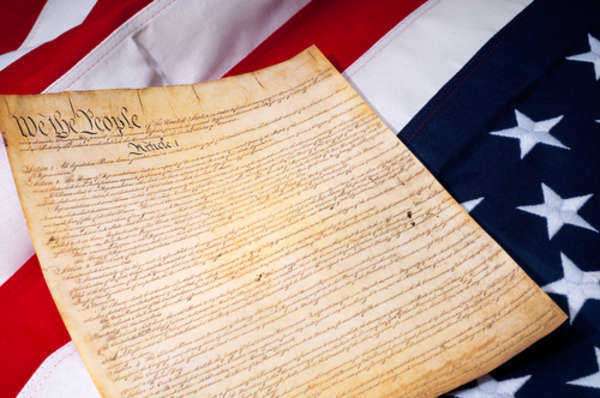Table of Contents

Introduction:
The United States Constitution is the supreme law of the land, providing the framework for the federal government and protecting individual rights and liberties. Over the years, many amendments have been proposed to the Constitution that, if ratified, would have significantly altered its scope and impact.
However, not all of these proposed amendments were ratified by the required number of states and thus did not become part of the Constitution. These Unratified Amendments offer a fascinating insight into the development of the Constitution and the values and priorities of the American people over time.
Background:
The process of amending the Constitution is set out in Article V of the Constitution. The process involves proposal by either a two-thirds vote of both chambers of Congress or by a convention called for by two-thirds of the state legislatures. After the amendment has been proposed, it must then be ratified by three-fourths of the states (currently 38 out of 50) either by state legislatures or by state conventions.
As of 2021, 27 amendments have been ratified and added to the Constitution, the first ten of which are collectively known as the Bill of Rights. However, many other amendments have been proposed over the years, some of which were ratified by some states but failed to gain the necessary support to become part of the Constitution.
Overview of Proposed and Unratified Amendments:
There have been hundreds of proposed amendments to the Constitution over the years, covering a wide range of subjects. These proposed amendments offer insight into the values and priorities of different periods of American history, from proposals to ban slavery to calls for term limits for members of Congress.
Some of the more significant proposed and unratified amendments include:
1. The Equal Rights Amendment (ERA): This amendment was introduced in 1923 and sought to guarantee equal rights for all citizens regardless of sex. The amendment was passed by Congress in 1972 and was subsequently ratified by 35 states. However, it failed to gain the necessary support of three-fourths of the states and thus did not become part of the Constitution.
2. The Corwin Amendment: This amendment was proposed in 1861 in an attempt to prevent the Civil War. It sought to protect slavery by amending the Constitution to prevent Congress from ever interfering with the “domestic institutions” of any state, including slavery. The amendment was ratified by three states before being overshadowed by the outbreak of the Civil War and ultimately failing to gain widespread support.
3. The Child Labor Amendment: This amendment was proposed in 1924 and sought to give Congress the power to regulate child labor. The amendment was passed by Congress but failed to gain the support of three-fourths of the states and thus did not become part of the Constitution.
4. The Bricker Amendment: This amendment was proposed in 1953 and sought to restrict the power of U.S. presidents to enter into international agreements without the approval of Congress. The amendment was initially popular, but it faced opposition from President Dwight Eisenhower and never gained the support it needed to become part of the Constitution.
5. The Balanced Budget Amendment: This amendment has been proposed multiple times over the years and seeks to require the federal government to balance its budget every year. The amendment has never gained the necessary support of three-fourths of the states.
Impact of Proposed and Unratified Amendments:
Although many proposed and unratified amendments have failed to become part of the Constitution, they have still had a significant impact on American politics and society. These amendments have helped to shape public debate and political discourse, influencing the development of laws and policies across the country.
The ERA, for example, played a key role in the Women’s Rights Movement of the 20th century, highlighting the ongoing struggle for equal rights and opportunities for all Americans. The Child Labor Amendment helped to raise awareness of the plight of child laborers in the early 20th century, leading to increased action and legislation to protect children from exploitation.
The Corwin Amendment, on the other hand, serves as a reminder of the deeply entrenched divisions that ultimately led to the outbreak of the Civil War. The Bricker Amendment, meanwhile, highlights ongoing debates over the balance of power between the executive and legislative branches of government.
Conclusion:
Proposed and unratified amendments offer a fascinating insight into the values, priorities, and debates of different periods of American history. These amendments have helped to shape public discourse and influence the development of laws and policies across the country, even though they did not ultimately become part of the Constitution.
Although the process of amending the Constitution is difficult, it is a crucial safeguard of democracy and a tool for ensuring that the Constitution remains relevant and responsive to the needs and aspirations of the American people. The proposed and unratified amendments serve as a reminder of the importance of this process and of the ongoing struggle for justice, equality, and freedom in the United States of America.To date, six Amendments have been proposed for ratification but did not achieve the votes in the State legislatures necessary for ratification. Of these six, four are still active.
Article One of the original Bill of Rights, more commonly known as the First Article, was designed to control the size of electoral districts by setting specific mandates about how many representatives a State would receive based upon the population of that State. It was proposed by the first Congress in 1789 and eleven states ratified it by 1792, which was just short of the number needed.
Even if it had been ratified, nearly all Constitutional historians feel it would have been either amended or repealed eventually, as its mathematical means of calculating and capping population to a representative ratios would have been unrealistic as the country’s population expanded and exploded. Under the specifications of the Article, if the amount of representatives were held at the original ratio (one representative to every 50,000 persons), then based on the 2000 Census there would be 5,628 representatives. The Amendment is still active, technically, but its chances of passing are nonexistent.
The Titles of Nobility Amendment proposed that any a citizen who accepted a title of nobility from a government that is overseen by a monarch would automatically disavow their American citizenship and be forbidden from ever holding a Government office. It was proposed in 1810, during a period where the United States was still antagonistic toward Great Britain (which led to the War of 1812) as well as Emperor Napoleon’s regime in France, and therefore, there was a virulent strain of anti-nobility in the country.
Despite this, only 12 states ratified the document before 1812, and none have since. While the proposal remains active, it would require another 26 states to ratify it. Since the political significance of royalty the world over has essentially declined and many Americans hold titles from foreign governments while still being proud and productive Americans, it likely will never be ratified, nor does it need to be.
The Corwin Amendment was a controversial Amendment in its time, which would have, in essence, forbidden Congress from interfering or abolishing State policies, which was mainly a way of preventing the Congress from abolishing slavery in states where it was already practiced. At the time, it was seen as a means of staving off the Civil War, but it was ineffectual as the Confederate States of America was already committed to declaring independence by that point.
It was only ratified by two states, and by another State’s Constitutional Convention, and while it is technically still active, the passage of the thirteenth Amendment would negate its validity based on the doctrine of stare decisis. (See Coleman v. Miller, which determined that Amendments proposed without a time limit will remain active indefinitely. As a result, subsequent proposed Amendments have often had a time limit imposed upon them.)
The Equal Rights Amendment would have essentially forbidden discrimination or limitation of an individual’s rights based on sex. While it passed in both Houses of Congress, it was only ratified before its deadline in 1979 by 35 states. When it failed to pass, Congress, in a move considered very controversial, extended its deadline by another three years in a move that was due to face judicial review but was not able to make it before the new 1982 deadline.
Since no new ratifications happened during the period, with five states in fact rescinding their approval for the ERA, the deadline was allowed to expire. A new Equal Rights Amendment was proposed in the House of Representatives in 2009 and is still pending proposal status.
The District of Columbia Voting Rights Amendment was proposed in 1978 and would have granted the District full rights of representation in Congress and full participation in the Electoral College (as well as a role in deciding Constitutional Amendments), but it was only ratified by 16 states before it expired in 1985.

















